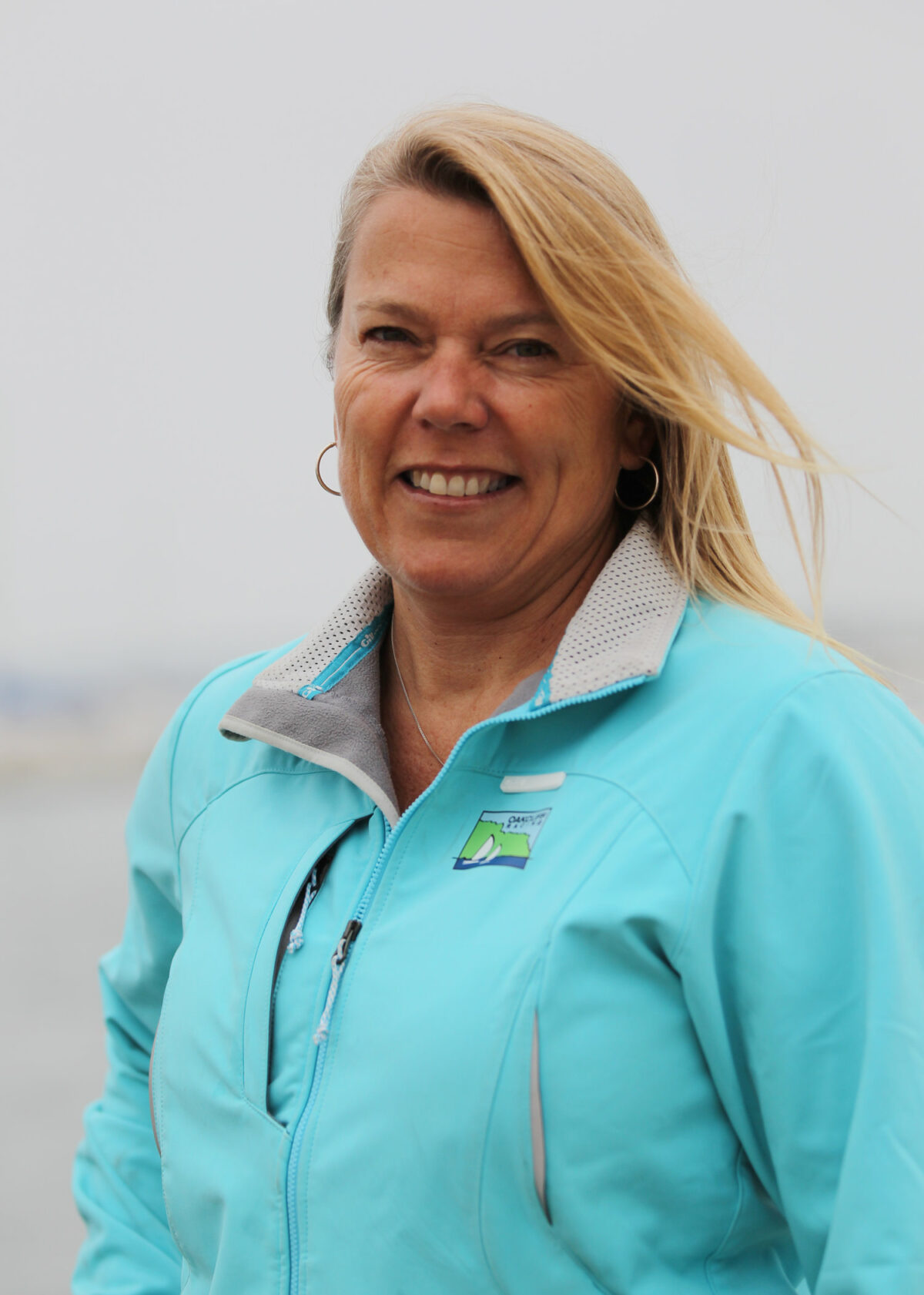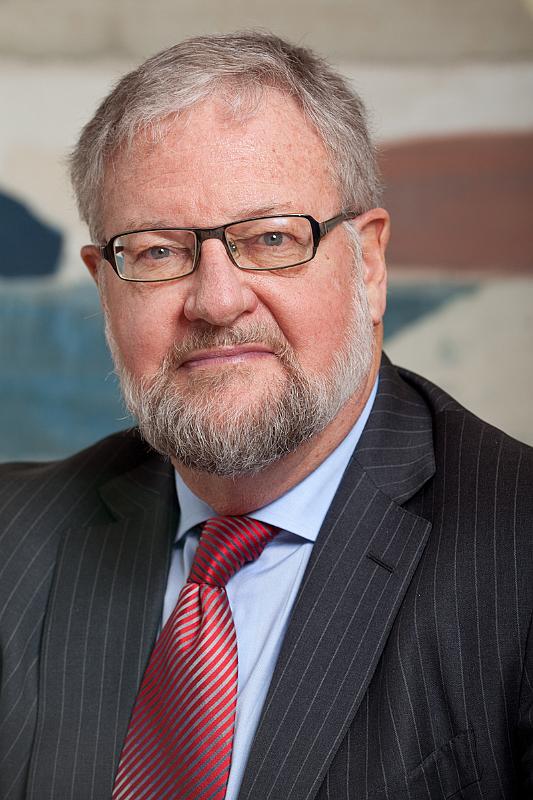
Laura Hopkins grew up sailing on the Great Lakes, racing 420s and Sunfishes. In the summertime, her family would head from their home in Buffalo to her grandmother’s house in Woods Hole, and there Laura would sail her dad’s Herreshoff 12 ½.
She learned at an early age that “Boating out on the water, whether by sail or motor, with the wind, the spray of the sea, and the distant horizon, is magical.”
Hopkins started as senior vice president for Advancement in early January, as the Museum prepared to launch its Era of Exhibitions. She brings with her that same sense of wonder and appreciation of what Mystic Seaport is and does that she has for being on the water, be it salty or fresh.
“I revel in the history of this organization, the wealth of knowledge here, the grittiness of the shipyard,” she said in a recent interview in her sunny office on the second floor of 75 Greenmanville Ave., where she hasn’t yet finished hanging the (largely nautical) art on the walls. “We have resources, institutional knowledge, an incredible staff, and a sense of teamwork and collaboration.”
Hopkins’ other passion besides sailing is painting. She primarily paints abstracts with oils, and also draws and sketches. She has a studio in the Velvet Mill in Stonington Borough.
A career in museums
Her love of art led her to study art history at Vassar, and when she graduated she moved to San Francisco and landed a job at the M.H. de Young Museum running group tours for the blockbuster show, Treasures of the Vatican.
“I had to squeeze a thousand people an hour into the museum before it opened, and make them feel special,” she said. “That was my first job.”
She took that job as she was deciding whether to go on to graduate school and become an art historian/curator. “But I got distracted,” Hopkins notes. “I moved into managing a small nonprofit, and I was hooked. I enjoyed working with a board, interacting with philanthropists and the process of going from vision to execution.”
She moved to Seattle after San Francisco and spent 17 years at Seattle Art Museum in a variety of positions, advancing from grants manager to associate development director. She specialized in raising the contributed revenue necessary to support exhibitions and education programs, using her grant writing expertise to work more effectively with foundations and government agencies. During her tenure there the museum tripled in size and successfully completed a $200 million capital campaign.
She also directed advancement departments at two smaller nonprofits, building major giving programs, running annual fund campaigns and adding to membership ranks. Working as a consultant to non-profits for several years has raised her awareness of the critical importance of having an engaged Board of Trustees. “Mystic Seaport has one of the best boards around,” she said.
A life and career change
While all this was going on, Hopkins got married, raised two children, and went through a divorce. She decided to return to Buffalo for her 35th high school reunion, not having been back since she graduated. At the party, she bumped into a classmate named John Farmelo. They dated long distance, and then she moved back East and they married. After a couple of years in Buffalo, John left the investment field and decided to work in the yacht brokerage business. Laura was consulting with museums at the time, and together they moved to Mystic with their two dogs.
“We moved to Mystic in April of 2017, and became members of Mystic Seaport the first week we lived here,” Hopkins said. “We appreciate the culture here – it’s a boating community but it’s not a beachy vacation place. It’s authentic to its history.”
“I was contacted by a recruiter last September,” Laura recalled. “When I mentioned to her that I had moved to Mystic, she said, ‘Are you kidding me? I have this amazing job at Mystic Seaport that just opened up’.”
Arriving just as the Era of Exhibitions is launching gives Hopkins a sense of certainty that Mystic Seaport is on the cusp of its next transformation. “The organization is in such a great place and I believe I will make an impact. I am excited about the future of Mystic Seaport. It has so many strengths, and so much potential. I come home from work every day excited and charged up. It seems as if it was meant to be.”




 Riley stands alone as the first woman to compete in both the America’s Cup and in the Whitbread Round the World Race, two of the pinnacles in the sport of sailing that prior to her had been all but closed to women sailors. Riley also went on to become the first American, male or female, to sail in three America’s Cups and two Whitbread Round the World Races.
Riley stands alone as the first woman to compete in both the America’s Cup and in the Whitbread Round the World Race, two of the pinnacles in the sport of sailing that prior to her had been all but closed to women sailors. Riley also went on to become the first American, male or female, to sail in three America’s Cups and two Whitbread Round the World Races.
 David Rockefeller Jr., Chairman of Rockefeller & Co., is an active participant in the nonprofit arena, especially in the areas of the environment, the arts and philanthropy. He served as a member of the Pew Oceans Commission from 2000-2003, and he founded Sailors for the Sea to educate the recreational boating community about significant challenges to ocean health and to motivate them to become ocean stewards. Sailors for the Sea is located in Newport, RI, with satellite offices in Japan, Portugal, and Chile.“Sailors for the Sea and I are incredibly honored to join the illustrious roster of America and the Sea Award recipients. Through this opportunity we look forward to fostering an even deeper collegial relationship with Mystic Seaport, broadening the scope and outreach of both organizations. It paves the way for our two organizations to collaborate more directly on projects that serve our shared ideals, and raise awareness of the issues both organizations hold dear, our maritime past and present and the future vitality of our oceans,” said Rockefeller.
David Rockefeller Jr., Chairman of Rockefeller & Co., is an active participant in the nonprofit arena, especially in the areas of the environment, the arts and philanthropy. He served as a member of the Pew Oceans Commission from 2000-2003, and he founded Sailors for the Sea to educate the recreational boating community about significant challenges to ocean health and to motivate them to become ocean stewards. Sailors for the Sea is located in Newport, RI, with satellite offices in Japan, Portugal, and Chile.“Sailors for the Sea and I are incredibly honored to join the illustrious roster of America and the Sea Award recipients. Through this opportunity we look forward to fostering an even deeper collegial relationship with Mystic Seaport, broadening the scope and outreach of both organizations. It paves the way for our two organizations to collaborate more directly on projects that serve our shared ideals, and raise awareness of the issues both organizations hold dear, our maritime past and present and the future vitality of our oceans,” said Rockefeller.




